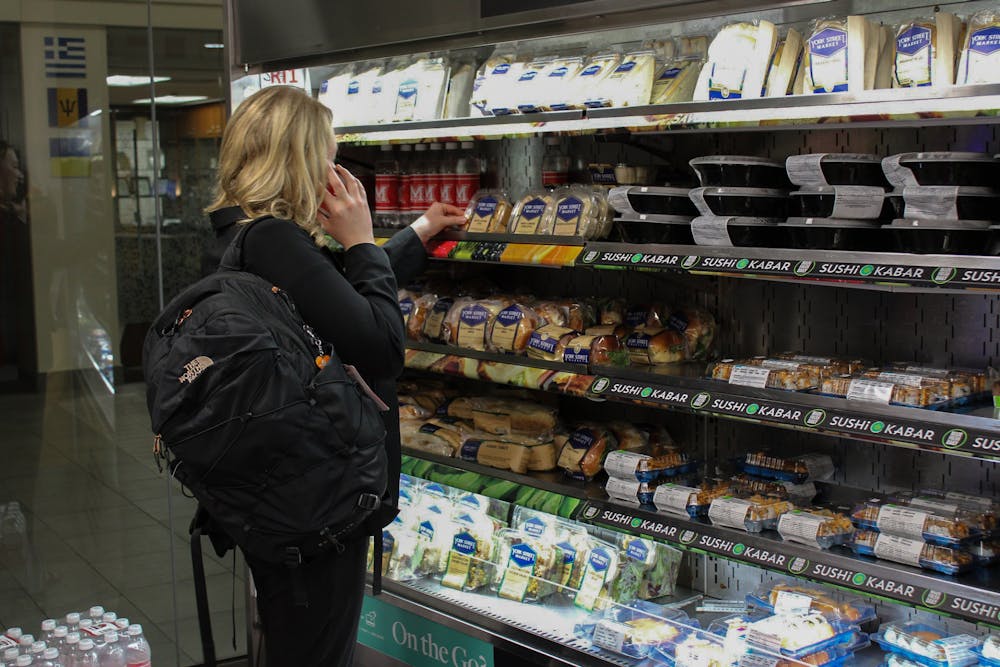At Miami University, meal swipes allow students to eat at dining halls while declining dollars provide payment for other on-campus restaurants. However, declining dollars are called that for a reason – students are running out too fast. Places that accept declining dollars on campus are scarce and too expensive.
To start, the only name-brand restaurants on campus are Starbucks and Panera. Both of these places can get pricey if you consider how much a regular college student frequents these establishments.
For example, a grande (medium) iced latte from Starbucks costs $5.25, while the same-sized iced chai costs $5.65. This doesn’t include add-ins, drink customizations, or a pastry or sandwich on the side. Overall, with one drink, add-ins and one food item, a Starbucks order can be $10-13.
In addition, according to Panera’s menu on Grubhub – the primary ordering service for this restaurant – one full sandwich costs $12.98.
A popular way for students to purchase these meals is through declining dollars. “Diplomat Plus” is the meal plan that allows for the most declining dollars ($1,100). So, if a student has just one traditional Starbucks meal and one traditional Panera meal each week over the 15-week-long semester, this student loses over $3oo on two restaurants.
Not to mention, students are spending declining dollars on other places and may be ordering Starbucks and Panera multiple times a week.
To combat this, more name-brand restaurants should be introduced to campus. Chick-fil-A has been a desire amongst Miami students for a while. Introducing more options would diversify both food choices and prices on campus. It would also create employment opportunities and alleviate pressure from current Starbucks and Panera workers who are bombarded with massive orders all day.
Another outstanding problem in the on-campus food world is the disparity between declining dollars and meal swipes. The meal swipe options for restaurants are worse in quantity and quality.
For example, the True Burger meal swipe menu at MacCracken Hall consists of only two options: a breakfast sandwich and a burger. On the other hand, the declining dollar menu consists of two breakfast sides, four burgers that are $11 each and six sides ranging from $4-6. The difference is clear, meal swipes have been made to be an inferior option for students outside of dining halls.
Equalizing the options between the declining dollar and meal swipe menus would relieve an extensive burden on students. Miami students should not have to choose between saving money or having a nutritious meal.
Sasha Kapinos is a second-year psychology and neuroscience major with a minor in Spanish. She is from Cleveland, Ohio, and is a contributor to the opinion section of The Student.




